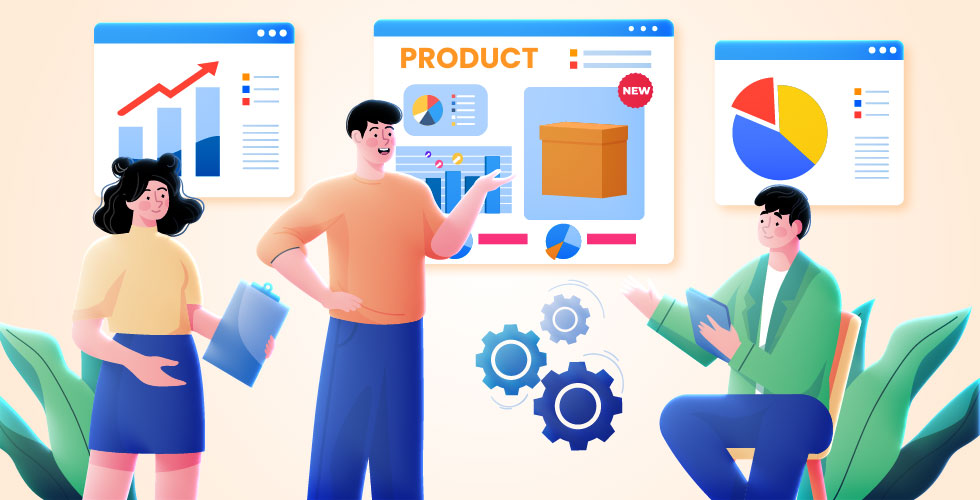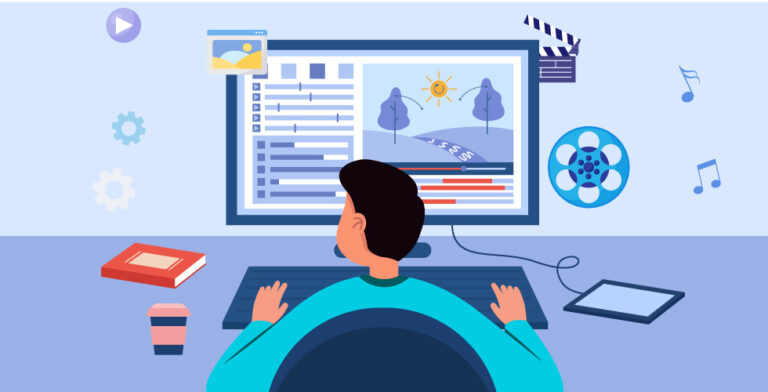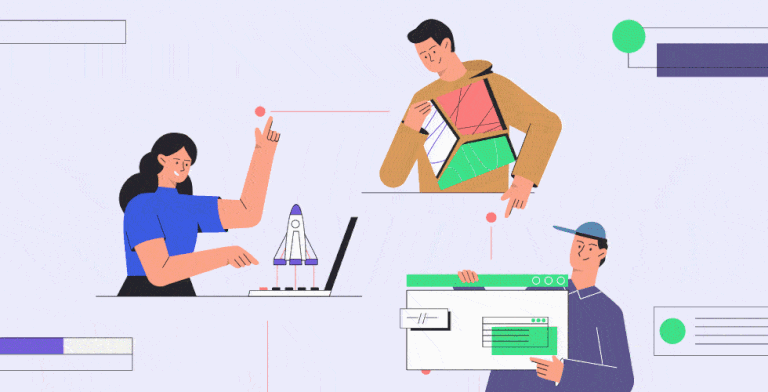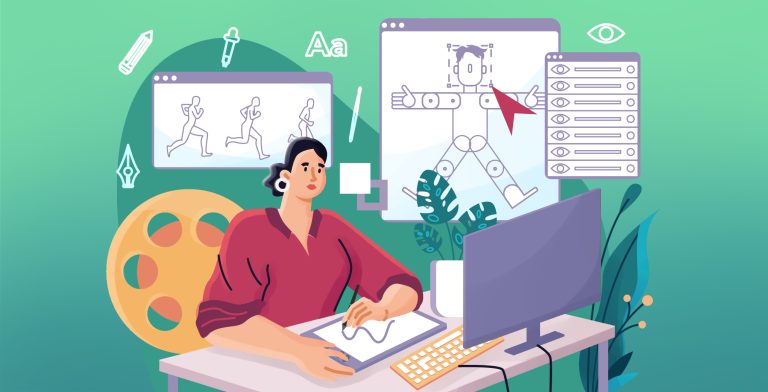Product-led growth (PLG) represents a new paradigm in customer acquisition and revenue growth. Rather than traditional marketing or sales-driven tactics, a product-led growth model relies on the product itself as the main vehicle to attract, convert, and retain users.
But what exactly is product-led growth? How does it work? And how can explainer videos support product-led strategies? This guide will cover everything you need to know about leveraging PLG to fuel scalable business growth.
What is Product-Led Growth?
Product-led growth is a business strategy where a company’s product itself acts as the primary driver of user acquisition, conversion, and expansion. With PLG, the product’s features, usage, and inherent value attract and convert visitors into engaged, long-term customers.
Rather than outbound sales teams or promotional tactics, the product experience itself takes center stage – acting as its own lead generator and sales engine. This results in organic, low-friction user growth.
A simple way to think of PLG is growth enabled by the product rather than the sales or marketing department. The product experience captures users and persuades them to stick around, upgrade, and expand their usage which helps to enhance engagement and retention.
Key Elements of a Product-Led Strategy
For a product to successfully drive growth, there are a few key elements to incorporate:
1. Frictionless Onboarding
It all starts with signup and onboarding. PLG products make it fast and easy for users to get started. Rather than lengthy forms, they offer quick signups with social login or via email/password.
Walkthrough tooltips and in-app tutorials introduce users to core product workflows. Slack’s “getting started” modal is a prime example. This fast ramp helps users experience value faster.
2. Freemium Offerings
Providing a free version or freemium pricing is perhaps the most ubiquitous PLG tactic. This eliminates barriers to trying a product and experiencing its benefits first-hand.
Whether it’s a time-limited trial or a free tier, a freemium model supports easy sign-ups. It also supplies a frictionless upgrade path to convert engaged users to paid plans.
Slack, Canva, and other titans have leveraged freemium successfully by limiting – but not crippling – free versions.
3. Core Value Messaging
PLG products also communicate their core value clearly from the outset. Simple taglines like “end the email back-and-forth” (Calendly) or “where work happens” (Slack) convey the main user benefit.
Illustrating the value proposition upfront helps visitors immediately grasp how a product can impact their lives. This builds interest and loyalty faster.
4. Continual Optimization
PLG requires continually monitoring metrics and testing improvements – especially in high-traffic areas like signup flows. Optimization might include A/B testing landing pages, changing form fields, or adjusting freemium limits.
By tweaking and evolving the product experience, brands can boost conversation rates and retention over time – compounding growth gains.
Your Message
With Animation
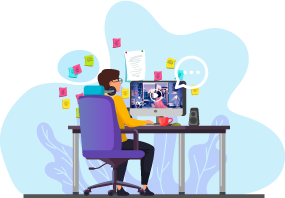
Transform Your Message With Animation

Traditional Marketing vs Product-Led Growth
To understand PLG, it helps to contrast it with traditional sales/marketing-led user acquisition:
Traditional Marketing
- Uses ads, and promotional content to attract potential customers
- Relies on a sales team to convert leads through demos and persuasion
- Focuses on broad reach and impressions
- Leads come in via marketing-generated tactics
- Higher touch, manual lead conversion process
- Uses discounts, and time-limited offers to incentivize sign-ups
Product-Led Growth
- The product itself draws users in organically
- Users can sign up and experience the product on their own
- Low/no-touch self-service onboarding
- Viral loops and referrals help spread brand awareness
- Usage and value drive user conversion
- Data-informed optimization of user journey
Example
Here is an example to help you understand the difference between traditional sales/marketing-led user strategy and PLG:
Imagine that you are selling a new type of smartphone. With a traditional sales and marketing-led approach, you would need to invest in advertising and marketing campaigns to generate leads. Once you have a lead, you would need to send a salesperson to close the deal. This can be a time-consuming and expensive process.
With a PLG strategy, you would instead focus on creating a smartphone that is so good that people will want to buy it without even being asked. You would offer a free trial or a freemium model so that people can try out the phone before they buy it. You would also make it easy for people to upgrade to paid plans as they get more value from the phone.
In this analogy, the traditional sales and marketing-led strategy is like trying to sell a car to someone who is not even interested in buying a car. The PLG strategy is like trying to sell a car to someone who is already interested in buying a car but just needs a little more convincing.
So, hope this example helps you to understand the key differences between them.
Benefits of Product-Led Growth
Now that you might understand the concept of PLG, let’s take a look what are the benefits of it:
- More efficient user acquisition – Products that provide free access allow you to capture users who actively seek out your solution rather than you having to find them.
- Higher conversion rates – Users that discover and engage with your product at their own pace (without being sold to) typically convert at much higher rates and make more loyal customers.
- Increased retention – PLG fosters a deep connection between customers and the product, as they have a hands-on experience from the start. This connection results in higher retention rates and customer loyalty.
- Scalability – PLG strategy leverages the product itself to drive growth, removing bottlenecks like sales bandwidth.
- Organic virality – Satisfied users share and refer others, fueling exponential peer-to-peer growth.
- Data-driven decisions – In-product behavior provides insights into user actions that can inform product optimizations for better conversions.
- Innovation culture – PLG requires building a great product experience, which leads to an iterative, user-centric product culture.
- Expanded reach – Virality and word-of-mouth expand brand exposure beyond just targeted advertising.
The Role of Explainer Videos in Product-Led Growth
Explainer videos play a vital role in educating potential users about a product’s value and functionality. These concise, visually appealing videos are designed to clarify complex concepts and showcase the product’s features.
They are an integral part of a PLG strategy, serving as a bridge between user acquisition and product adoption. Explainer videos enable companies to:
1. Make Product Value Clear: By presenting a product’s key features and benefits visually, explainer videos help potential users quickly understand the value they can gain from the product.
2. Encourage Trials and Conversions: A well-crafted explainer video can motivate users to take action, whether it’s signing up for a free trial or making a purchase. It simplifies the decision-making process.
3. Guide Users Through Onboarding: Complex products often require onboarding to ensure users can utilize their full potential. Explainer videos guide users through this process, making it user-friendly and efficient.
4. Increase User Confidence: Videos help users gain mastery of your product, improving retention and satisfaction.
5. Scale Customer Education: Reusable videos allow you to educate high volumes of users without sales bandwidth.
6. Spread Awareness: Videos extend your product’s reach and visibility, especially if shared socially.
7. Set Customer Expectations: Well-produced videos demonstrate your product’s quality and reliability.
Successful Product-Led Growth Implementations
Several companies have harnessed the power of PLG to achieve remarkable success. Some notable examples include:
- Slack: This popular team collaboration platform gained prominence through its freemium model and user-friendly interface, attracting millions of users before they even considered paying.
- Zoom: Zoom disrupted the video conferencing space by offering a simple and user-friendly platform, fostering rapid adoption and growth.
- Dropbox: With its referral program that rewarded users for inviting friends, Dropbox experienced exponential growth, all while emphasizing the simplicity and utility of its product.
- Canva: This graphic design tool made creating visually appealing content accessible to everyone with its user-friendly platform and PLG approach.
Common Product-Led Growth Tactics
Now that we’ve discussed the benefits and roles of PLG, how does it actually work? Here are some of the key tactics and strategies used to implement a product-led strategy:
1. Freemium Versions
Offering a free or “freemium” version of a product is a popular PLG tactic. This gives users the chance to experience your product’s core value firsthand.
Whether it’s a limited-time trial or an ongoing free plan, a freemium model enables frictionless sign-ups. It also provides an easy upgrade path to convert engaged free users into paying customers.
Slack, Dropbox, and Canva all use freemium successfully by limiting, but not crippling, their free versions.
2. In-Product Onboarding
Onboarding is the crucial first experience users have with your product. PLG companies optimize this by providing in-app walkthroughs, tooltips, and tutorials.
Smooth onboarding guides users through initial workflows and gets them to experience core product value faster. This increases adoption and retention.
Videos are a versatile medium for onboarding. They can provide an overview of key features or walk users through completing critical workflows.
3. Viral Loops
Viral loops are built-in product capabilities that incentivize sharing and referral. Examples include “invite your team” options or social sharing features.
By rewarding referrals with free services or capabilities, users are essentially enlisted as a sales team. Viral loops take advantage of network effects to fuel growth.
DropBox’s free storage bonus for referrals is a classic viral loop that helped propel their growth.
4. Usage-Based Upgrades
Freemium models enable a crawl, walk, run approach where users start for free but expand into premium offerings.
PLG products promote upgrades through nudge messaging or in-app prompts. Identifying power users and when they hit capability limits can indicate upgrade opportunities.
Optional paid tiers serve the subset of free users who find enough ongoing value to upgrade and expand their usage. Each paying customer found this way is very cost-efficient.
Videos can support upgrade conversions by previewing premium features or highlighting expanded capabilities available in paid plans.
5. In-Product Surveys
In-product feedback surveys help you identify areas for improvement directly from engaged users. Asking for input on onboarding, features, user experience, and more gives actionable data.
These insights allow for optimizing user pain points and identifying new opportunities – ultimately leading to better product-market fit.
6. Product Qualified Leads (PQLs)
PQLs are leads generated not through marketing tactics but through product usage like signing up for a trial.
Create Explainer Videos with Product-Led Growth Model
Explainer videos aid PLG by helping users understand the product’s value and guiding them through the adoption process. To create effective explainer videos in line with PLG models, consider the following tips:
1. Clear Communication
Explainer videos excel at simplifying complex concepts. They use visual aids and straightforward language to convey a product’s value. This clarity is essential in the PLG model, where users should quickly grasp why the product matters and how it can improve their lives.
2. Encouraging User Action
Explainer videos are like friendly nudges, encouraging potential users to take the next step. Whether it’s signing up for a free trial, subscribing, or making a purchase, these videos make the process less intimidating and more inviting.
3. Guiding Through Onboarding
Some products have intricate features that might confuse users. Explainer videos act as user guides, ensuring a smooth onboarding experience. They simplify the learning process, making it easier for users to start using the product effectively.
4. Showcasing Benefits and Features
Explainer videos highlight a product’s benefits and features in a visually engaging way. Users get a taste of what the product can do for them, often in just a few minutes. This can be a game-changer in a PLG strategy, as it directly demonstrates the product’s value.
5. User Engagement
Explainer videos are not just about educating users; they also help keep them engaged. In the PLG model, user engagement is crucial for retention and conversion. Engaging videos make users more likely to continue exploring and using the product.
Best Practices for Product-Led Growth Explainer Videos
When crafting videos to support PLG, keep these best practices in mind:
- Focus on user benefits: Concentrate on communicating tangible user value vs just features.
- Align to user journey: Create videos to support critical workflows like onboarding and upgrade conversions.
- Educate and inspire: Videos should both explain your product and get viewers excited to try it.
- Include social proof: Client testimonials and expert logos can increase credibility.
- Persuade action: End each video with a clear CTA to your free trial or pricing page.
- Optimized discovery: Use SEO titles/descriptions so people can find your videos in search.
Overcoming Product-Led Growth Challenges
While promising, Product-Led Growth also brings some challenges including:
- Product Excellence: PLG hinges on having a product that can genuinely deliver value. If the product falls short, the entire strategy can crumble.
- Understanding User Journeys and Incentives: Successful PLG requires a deep understanding of user behavior and motivations. Companies must align their product and marketing efforts with these insights.
- Supporting Multiple Customer Entry Points: PLG often leads to multiple entry points for users. Ensuring a consistent and valuable experience across these entry points is critical.
- Still Utilize Marketing: While the product leads, smart marketing can amplify awareness and accelerate growth. Use comprehensive strategies.
- Hard with Complex Products: PLG works best for straightforward self-serve products. However, strategies can still apply to enterprises.
- New Organizational Muscles: Transitioning from sales-driven models requires training teams in product-led growth tactics.
By overcoming these hurdles, your product can become an efficient, scalable driver of sustainable business growth. For creating effective explainer videos tailored to PLG strategies demands expertise and creativity you can rely on 10 Studio.
They specialize in producing compelling videos that align seamlessly with your PLG model, enhancing your user acquisition and product adoption efforts.
The Power of Product-Led Growth
Product-led growth has become a significant strategy in today’s business world. It represents a scalable approach where the product itself becomes a growth engine, attracting and converting users into loyal customers.
Explainer videos are a powerful way to communicate your product’s value and spur adoption. They enable users to visualize how your product can impact their lives for the better.
Your Message
With Animation

Transform Your Message With Animation

Well-designed videos that align with a product-led growth strategy help reduce friction in the user journey, encourage conversions, and set the stage for long-term retention and satisfaction.
By putting product value front and center, PLG and explainer videos allow companies to grow in an efficient, sustainable, and user-centric manner. Focusing on delivering tangible user benefits above all else is key to success.

